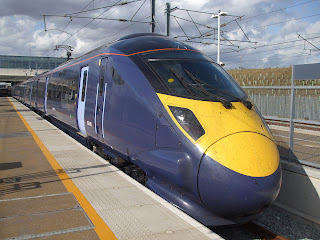 |
| Too infrequent! |
5km off-peak single train fare / daily maximum
Oslo - $4.65 / $12.93
Stockholm - $3.67 / $16.88
Liverpool - $3.65 / $5.46
London - $3.27 / $10.91
Brisbane - $3.08 / $27.72
5km off-peak single bus fare / daily maximum
Oslo - $4.65 / $12.93
Stockholm - $3.65 / $16.88
Liverpool - $3.11 / $5.46
Brisbane - $3.08 / $27.72
London - $2.18 / $6.86
Brisbane thankfully fares better in the off-peak than during the peak for single journeys, due to the 20% go card off-peak discount. Brisbane is also cheaper than Melbourne, Adelaide, and Sydney for a single 5km off-peak train journey. However, the lack of daily ticketing options means that it is possible to rack up a higher total daily fare in Brisbane than anywhere else in the world at $27.72 for multiple 5km journeys. Compare this to Melbourne's maximum of $7 on weekdays, and $3.50 on weekends! It should also be noted that Brisbane's single off-peak fares for 5km journeys are still more expensive than peak fares in all North American and Asian cities, as well as Perth and Auckland.
Off-peak train frequency (midday weekday and weekend) at 5km from CBD
London - 2.5 to 5 minutes
Liverpool - 5 to 15 minutes
Stockholm - 7.5 to 15 minutes
Oslo - 7.5 to 15 minutes
Brisbane - 6 to 30 minutes
The reduction in off-peak fares is thankful due to Brisbane's "third-world" off-peak train frequencies. Off-peak frequencies in Brisbane (per line) vary between every 15 minutes (Ferny Grove Line) to none existent (Doomben Line), with typical service frequencies of a train every 30 minutes. Many stations at approx. 5km from the CBD are served by more than one train line, thus aiding Brisbane's figures in the comparison.
Whilst many parts of Brisbane are served by half-decent peak bus frequencies, if you live away from a busway or major road corridor, you may be lucky to even see a bus during the off-peak. Thus Brisbane's off peak fares can still be considered poor value for money by many public transport users.
2013 World Fare Comparison - Part 1:
http://brizcommuter.blogspot.com.au/2012/12/2013-world-fare-comparison-part-1.html
http://brizcommuter.blogspot.com.au/2012/12/2013-world-fare-comparison-part-1.html
2013 World Fare Comparison - Part 2:
http://brizcommuter.blogspot.com.au/2012/12/2013-world-fare-comparison-part-2.html
2013 World Fare Comparison - Conclusion and Recommendations
http://brizcommuter.blogspot.com.au/2013/01/2013-world-fare-comparison-conclusion.html
http://brizcommuter.blogspot.com.au/2012/12/2013-world-fare-comparison-part-2.html
2013 World Fare Comparison - Conclusion and Recommendations
http://brizcommuter.blogspot.com.au/2013/01/2013-world-fare-comparison-conclusion.html
2013 Australian Fare Comparison:
http://brizcommuter.blogspot.com.au/2013/01/2013-australian-fare-comparison.html
http://brizcommuter.blogspot.com.au/2013/01/2013-australian-fare-comparison.html






















